Don't wanna be here? Send us removal request.
Link
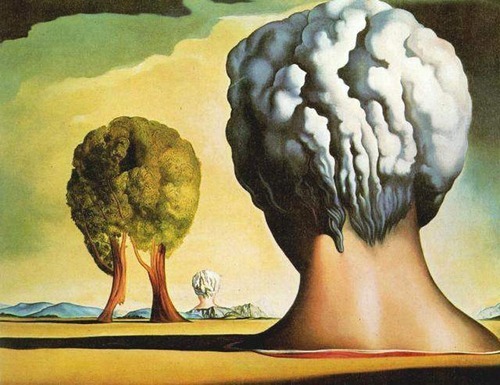
“What will decide social destiny today is the organic creation of a cast composition of forces, disciplined, fanatical, capable of exercising, when the time comes, a pitiless authority. That this orientation is inseparable from the theory of proletarian internationalism is suggested by Peret
Works Cited
Breton, Andre. What Is Surrealism Selected Writings. Ed. Franklin Rosemont. N.p.: Franklin Rosemont, 1978. Print.
2 notes
·
View notes
Photo

Ana Mendieta, Untitled from Fetish series, photograph, 1977, feminist art
Feminist art was a movement that went hand in hand with the women's liberation movement in the 1960s and 1970s in the United States. Women, in this particular case female artists, were rebelling against the patriarchal norms in society, and specifically here, the male-dominated art world. For thousands of years, the female form had been the base of many notable male artists' work, but women as artists had wielded little power over the art world at large, and were more often than not ostracized from the boy's club of the fine art world through the centuries.
One of the forerunners of the feminist art movement, Ana Mendieta was a Cuban-born artist working in America, with the particular focus of reclaiming the female form as just that - belonging to the female, and using it as a tool to express a woman's definition of femininity, as opposed to a male view. Her work satirized the male fetishization of the female form and paid homage to ancient fertility rituals, that she believed worshipped the female form as opposed to objectifying it. This latter theme was especially prevalent in her Fetish series, which were installations, sculptures and photographs of would-be ancient ceremonies and rituals focused on the female body.
Arnason, H. H., and Elizabeth C. Mansfield. History of Modern Art. 7th ed. Upper Saddle River, NJ: Pearson, 2013.
3 notes
·
View notes
Photo
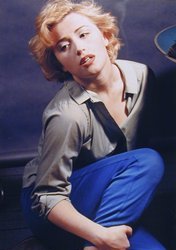
Marilyn Monroe, ZG Magazine Cover, Cindy Sherman, Portrait Photography. 1982. Postmodernism
Postmodernism is the return of the repressed. Photography was taking a new form. It is no more just capturing something different within one frame but it has become capturing the emotion, the unseen and creating a new form of fine art within a frame. There is so much fantasy of freedom within the pieces of Post modern art that it leaves the viewer gasping at the artwork. In 1982 Cindy Sherman appears on the cover of an Anglo AMerican Magazine, ZG. the notion behind this cover was Cindy Sherman wanting to portray herself as MArilyn Monroe. The cover is easily recognizable with Marilyn Monroe as the posture, hair style and attitude in the posture maintained is iconographic of Marilyn Monroe. Although cindy Sherman has not chosen to dress equivalent to her she did maintain Marilyn Monroe’s attitude in her own slacks and shirt. The glamor of the period is well maintained in the piece, with Cindy Sherman holding her hands held to thrown back head, with her eyes half closed and lips slightly open. Within this the one thing that lacks back is well said by Laura Mulvey, “ ..refracted through Sherman’s masquerade, Mariyln’s masquerade fails to mask her interior anxiety and unhappiness seems to seep through the cracks.”(Mulvey 75)
Cindy Sherman has a good take of her reflection on this piece: "It's all make-up." Is the cleavage real? "No, that's make-up and maybe some socks I put in my bra. Women used to do that – tissues and socks!".
Even though Cindy Sherman’s main overall idea in her work is noted to be her personal appearance in the work, but the paradox of her photographs is a confrontation of the absence of the female in the patriarchal society and an attempt to reconstruct the act of viewing in a male marked world. This work is highly post modern as it challenges to the fiction behind photography. It is some sort of challenge to reality. There is a juxtaposition between the way she is the reality form with the piece but she is portraying fictional aspects in the pieces. It is a contest between the unitary and autonomous subject.(Hutcheon 153)
I think this work is postmodern in every essence of it. It captures glamor of the subject (Marilyn Monroe) and also the emotion of the object, the artist.
Mulvey, Laura. Fetishism and curiosity. Bloomington, Indiana: Indiana University Press, 1996. 75. Print. <http://books.google.com.hk/books?id=tZWQ6Mp1x88C&pg=PA75&lpg=PA75&dq=1982 marilyn monroe cover cindy sherman&source=bl&ots=n6gU1fOfIZ&sig=Vc_Ryc-MHlooQ1_eSZsUBVdWHHY&hl=en&sa=X&ei=e2-lUb3sFJGWiQfC5IC4Ag&redir_esc=y#v=onepage&q=marilyn&f=false>
Hutcheon , Linda . “The” Politics of Postmodernism New Accents. 2. United Kingdom, Europe: Routledge , 2002. 153. Print. <http://books.google.com.hk/books?id=oUiKNGQ1imsC&pg=PA41&lpg=PA41&dq=postmodernism in cindy sherman's marilyn monroe postmodernism&source=bl&ots=c9Kffw36bs&sig=sOeK1PNj61eD-anGn8bTaYQw7ZE&hl=en&sa=X&ei=63WlUfaOJKaOiAf1yoHIBw&redir_esc=y
8 notes
·
View notes
Photo
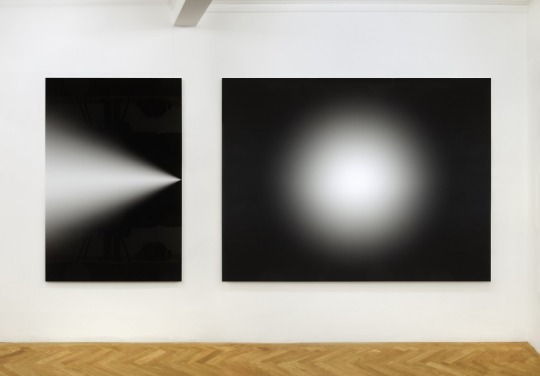
Michael Reisch, O.T. 8/013 (left), O.T. 8/013 (right), 2010, digital print, abstractionism
O.T. (Untitled) 8/013 (2010), a landscape- oriented black rectangle with a gradated, fuzzy- edged white circle at its centre. When standing in front of O.T. (Untitled) 8/013 the viewer can see both a mirrored version of herself and the ghostly mirrored image of the peak that’s behind her. However, if the viewer moves from left to right, the effect, on the mirrored image, shifts from light to dark – resulting in both the viewer’s reflection and that of the mountain appearing to fade in and out of focus, as if obliterated by a blizzard whiteout. Terms such as ‘abstract sublime’ have also been used when talking about Reisch’s work, and this seems a far more meaningful description than ‘postphotographic’. Whether pixel or negative, abstract or figurative – past, present or post – photography is still far more about the magical effects of shadow and light than the processes by which it’s made. And that’s something of which Reisch seems acutely aware.
2 notes
·
View notes
Text
Jenny Holzer, "Laments (I Want to Live...)," 1989, verde antique marble sarcophagus and electronic LED sign, sarcophagus, Conceptual Art
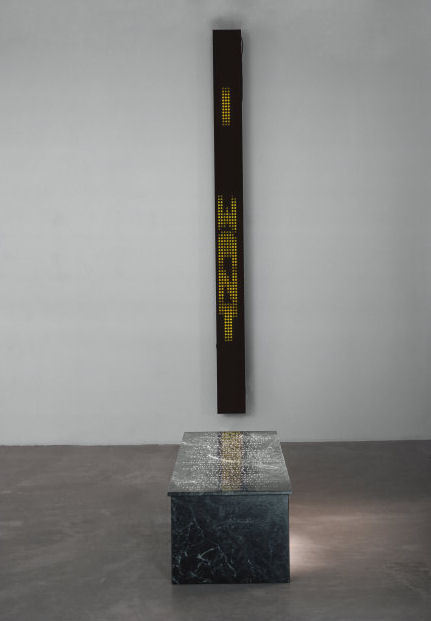
Jenny Holzer is an American installation and conceptual artist from New York. Her work is often text-based and made up of bold statements about society, with the intent of sparking public debate.
She is known for using large type, one-line statements, and a wide variety of mediums. Her work has been made with digital/LED signs, projection on buildings, billboards, TV, T-shirts, hats, benches, and even sarcophagi (as seen in the photo above).
Holzer wanted to challenge and explore the idea of where art is shown, for who, and what its intention is.
-----
"Holzer, Jenny." Grove Art Online. Oxford Art Online. Oxford University Press. Web. 29 May. 2013.<http://0-www.oxfordartonline.com.library.scad.edu/subscriber/article/grove/art/T038706>.
4 notes
·
View notes
Photo
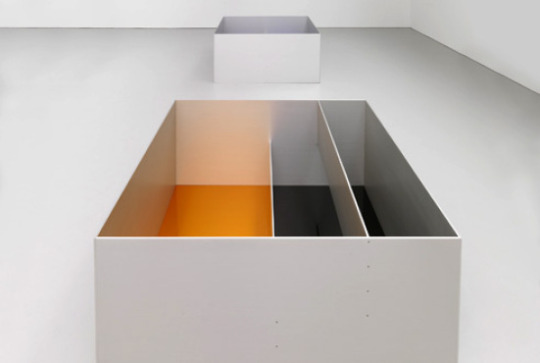

Donald Judd, Untitled, metal and acrylic glass installation, minimalism
Donald Judd is one one the leading figures in minimalism. His work are mostly in monochromatic. However, unlike other works of Judd, these sculptures—accompanied by a trio of pen-and-pencil diagrams—juxtapose the cool silver-gray metal from which they are primarily constructed with glossy sheets of brightly colored (and in some cases, black) Plexiglas. The works are all identically scaled, but these chromatic elements appear in a range of straightforward arrangements and combinations.
Tate Modern website "Tate Modern Past Exhibitions Donald Judd".
Tate Modern: Donald Judd February 5 – April 25, 2004.
1 note
·
View note
Text
Galleries review, otto li A Halo Of Counting Down
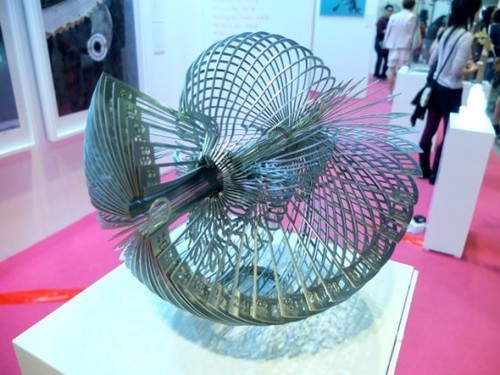
Hong Kong Eye presented by Prudential is a collection of works by 24 Hong Kong Artists encompassing the artistic heritage, rich tradition and the rapidly evolving society of contemporary art scene in Hong Kong.
This exhibition is free to the public at ArtisTree gallery, which is located in TaiKoo Place, and will provide vital international exposure for emerging Hong Kong artists, with the majority of works being shown for the first time outside of Asia.It included different medias such as painting, sculpture, drawing, photography, video and installation.
Otto Li exhibited a sculpture “A Halo of Counting Down” which is a circular timer made by wire, and using a counting down way to run it. people can thought this timer to see the core have a a wire skull. I think his work like russian Constructivist architecture, both of them are conceded the structure, factionally, line, and technology. It combined advanced technology and engineering with an avowedly Communist social purpose.
1 note
·
View note
Text
Zarina / Abstract Minimalism

"Dividing Line" 2001 Zarina. Woodcut Printed in black
Zarina's largely abstract aesthetic is thread together with political consciousness.Often times she explores the themes of despair, nostalgia and memory. With her print making skills she was able to demonstrate some of these abstraction and minimalism together through textures and and the carving of a woodblock.Though unlike many minimalist with hard edge techniques, her are often times soften.
2 notes
·
View notes
Photo
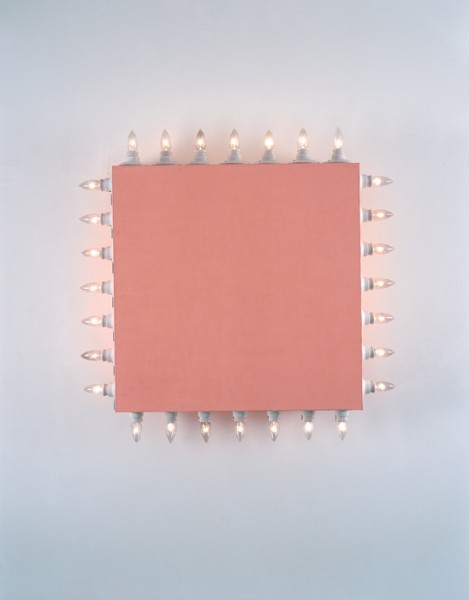
Dan Flavin, Icon V (Coran’s Broadway flesh), 1962, Oil on cold gesso on masonite, porcelain receptacles, pull chains, and clear incandescent ‘candle’ bulbs, Minimalism
Flavin combines the conventions of religious art with demotic material and metaphors of modern confusion in this piece, as James Lawrence reviewed. The wood panel in the middle painted with a skin-toned color suggested human flesh. A frame that simulate the Manhattan’s theater bright light, suggests the underlying meaning and culture; and as Flavin hints in the title of the piece, Coran’s personal view to the scene. According to Flavin, Coran was a homosexual who loved NYC.
Lawrence, James. “Dan Flavin. Washington.” The Burlington Magazine. Vol. 90-149. London: Burlington Magazine, 1948. 847-48. Print.
1 note
·
View note
Text
David Smith, Cubi XIX, 1964. Stainless steel,Tate Gallery, London. Art © Estate of David 4 Smith/Licensed by VAGA, New York.
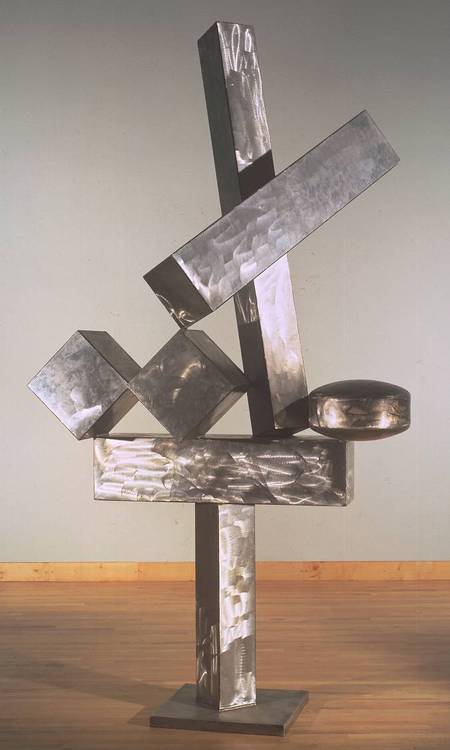
DAVID SMITH is a American sculptor (1906–1965), he produced metal sculptures that have affinities with the Abstract Expressionist movement in painting.
He learned to weld in an automobile plant in 1925 and later applied to his art the technical expertise in handling metals he gained from that experience. In addition, work- ing in large scale at the factories helped him visualize the possibilities for monumental metal sculpture. After experimenting with a variety of sculptural styles and materials, Smith created his Cubi series in the early 1960s.
These works, for example Cubi XIX , consist of simple geometric forms cubes, cylinders, and rectangular bars. Made of stainless steel sections piled atop one another and then welded together, these large-scale sculptures make a striking visual statement. Smith added gestural elements reminiscent of Abstract Expressionism by burnishing the metal with steel wool, producing swirling random-looking patterns that draw attention to the two- dimensionality of the sculptural surface.
2 notes
·
View notes
Text
Richard Long, A Line in Scotland, 1981. Post Minimalism
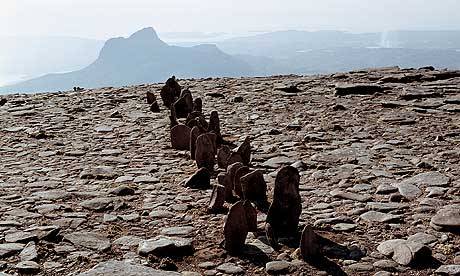
Earthworks exist at the intersection of architecture and sculpture. The Environmental Art movement emerged in the 1960s and included a wide range of artworks, most site-specific (created for only one location) and existing out- doors.
Long chooses to work with landscape because since childhood he always has, and because it gives him the most pleasure and the greatest inspiration.For him nature is the source of his work. the medium of his work is walking (the element of time) and natural materials ( sculpture ). for him, the label 'Land Art' represents North American monumental earthworks, and my work has nothing to do with that.
Also, he think our world is made up of lines, from comet tails to DNA. Everything is connected. Everything is sequential. Everything that moves, from a snail to a lava flow, leaves a line, a trace of its passing. A line can be fate, a commitment, a fact, a relationship, a place. some lines are well trodden paths, some intersect, some pass at a distance , some return to their origins. We all walk the line. We have an end and a beginning which is joined to a much longer invisible line in the past and in the future.
Long, Richard, and Denise Hooker. Richard Long: Walking the Line. Thames & Hudson, 2005. Print.
7 notes
·
View notes
Text
Richard Long, A Line Made by Walking, 1967. Post Minimalism
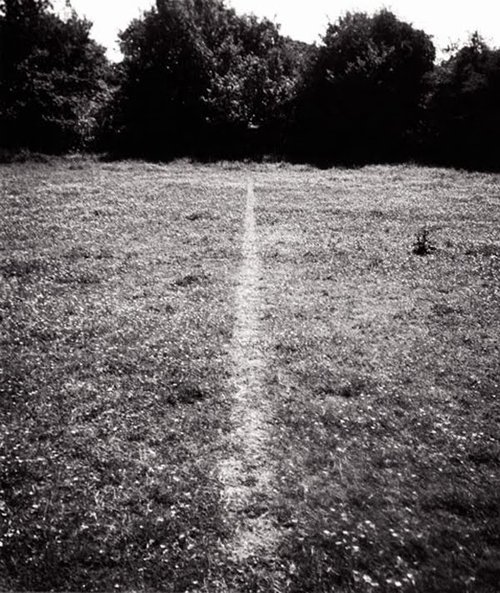
The term “Post- Minimalism” is used to designate art that is influenced by or attempts to develop beyond the aesthetic of minimalism. whose work can be seen as a direct response to Minimalism were known–shared the social conscience of their conceptualist contemporaries.
Richard long is not an artist who works in a studio. all his major works are made in museums and galleries, or in the countryside.
This is the first walking piece, and long strove for an art that was a formal and holistic description of the real space and experience of landscape and its most elemental materials.
Long, Richard. Mirage. Eng. ed., with additions. Phaidon Press, 1998. Print.
4 notes
·
View notes
Photo
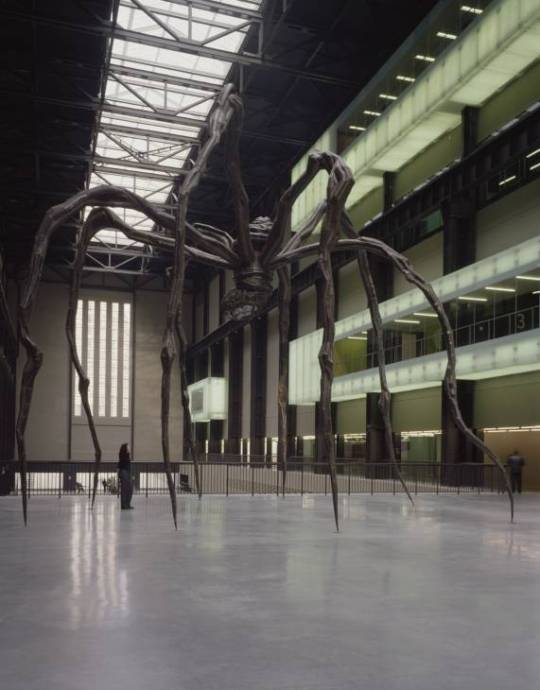
Post-Modernism Louise Bourgeois, "Maman", Steel and marble. 9271x8915x10236mm. Tate.
Maman is a monumental steel spider, so large that it can only be installed out of doors, or inside a building of industrial scale. Supported on eight slender, knobbly legs, its body is suspended high above the ground, allowing the viewer to walk around and underneath it. Each ribbed leg ending in a sharp-tipped point is made of two pieces of steel, and attached to a collar above which an irregularly ribbed spiralling body rises, balanced by a similar sized egg sac below. The meshed sac contains seventeen white and grey marble eggs that hang above the viewer’s head, gleaming in the darkness of their under-body cavity. Maman was made for the opening of Tate Modern in May 2000 as part of Bourgeois’s commission for the Turbine Hall, the grand central space of the museum. The sculpture was installed on the bridge, overlooking three tall steel towers entitled I Do, I Undo and I Redo, referring to processes of emotional development in relation to motherhood, a central theme in the artist’s oeuvre.
Source:
"Maman", Tate, <http://www.tate.org.uk/art/artworks/bourgeois-maman-t12625/text-summary>
1 note
·
View note
Photo
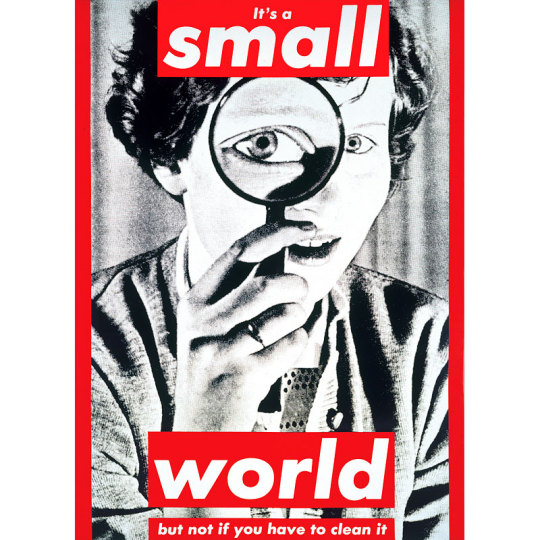
Post-Modernism Barbara Kruger. "Untitled (It’s a small world but not if you have to clean it", 1990. Photographic silkscreen on vinyl 143 x 103 in. The Museum of Contemporary Art, Los Angeles. Kruger's work juxtaposes images and texts that address 'cultural constructions of power, identity, and sexuality'. Since 1980, Kruger developed a highly recognizable style in her works, i.e. black, white, and red photo-text montages. This artwork features an image of a woman peering at the audience through a magnifying glass, which draws questions about who cleans up after whom that extend from more personal domestic and professional realms to the broader context of social political, and economic issues. Source: "Collection: MOCA's First Thirty Years". MOCA. <http://www.moca.org/pc/viewArtWork.php?id=35>
4 notes
·
View notes
Photo

Feminism Cindy Sherman, "Untitled Film Still #17", 1978. All photographs are gelatin-silver prints, approximately 7/2 x 912"or the reverse. The Museum of Modern Art, New York. Sherman was a feminist artist, probably best known for her "Untitled Film Stills" series. She once confessed 'to a lifelong penchant for dressing up and a love of low-brow film and fan magazines'. Interestingly, fictional identities played a significant part in her real life as well, where she was 'prone to odd attire and showing up at downtown events dressing up incongruously', for instance, as a nurse. On the other hand, she masqueraded and performed for the camera in private, which later known as "Untitled Film Stills". Audience was attracted to Sherman by her novelty self-portraits that were not at all autobiographical, but instead she posted 'as an actress posing for publicity pictures'. While artists, critics, and collectors were entertained at their first sight, they were soon mesmerized by the range of characters she chose to represent, the significance of the costumes, hairstyles, makeup, and even the locations she chose to place herself in. Basically, the oddity in the pictures that strikes audience to reflect and think about the issues behind her work was what brought her success.
Source:
Heiferman, Marvin. "In Front of the Camera, Behind the Scene: Cindy Sherman's "Untitled Film Stills"". MoMA, No. 25 (Summer, 1997), pp. 16-19. JSTOR. < http://www.jstor.org/stable/4381356>
6 notes
·
View notes
Photo

Minimalism
Donald Judd, Untitled, 1969, ten copper units, each 9" x 40" x 31". with 9 inch intervals. Guggenheim Museum, New York. Minimalist portrays objects in spare geometric forms, 'often made from industrial processes and materials, which lack surface details, expressive markings, and any discernible meaning'. Judd was born in the year 1928. He was an American artist and a key figure in the minimalist movement. Judd pointed out that his work reflects an anti-rationalistic point of view because the parts are unrelating, because when there's nothing to relate, then it can't be considered as rational because it's just there. He explained that, 'when you starts relating parts in the first place, you're assuming you have a vague whole -- say the rectangle of the canvas -- and definite parts, which is all screwed up, because you should have a definite whole and maybe no parts, or very few. The parts are always more important than the whole'. And what he seek is for the whole to be more important than the parts, 'to maintain the sense of the whole thing'.
Sources:
Harris, Beth & Gallagher-‐Lindsay, Shana. "Donald Judd's UnTtled". Smart History. <hIp:// smarthistory.khanacademy.org/minimalismjudds-‐unTtled.html> BaIcock, Gregory. “QuesTons to Stella and Judd”. Minimal Art: A CriTcal Anthology. University of California Press. <hIp://web.mit.edu/allanmc/www/stellaandjudd.pdf>
3 notes
·
View notes
Photo

Minimalism
Donald Judd, "15 untittled works in concrete", Concrete. 1980-‐1984, detail Chianti Foundation, Marfa, Texas. Judd stated in an interview in 1971, that 'the thing about [his] work is that it is a given'. The actual presence of this given, the known quantity, necessitates complex definitions, inventions and decision, and is what matters the most to him. Judd believed that the compositional effects 'tend to carry with them all the structures, values, feelings of the whole European tradition'. He pointed out that the qualities of European art so far are innumerable and complex. And the biggest problem he had with these qualities is that 'they're linked up with rationalistic philosophy.
Source:
BaIcock, Gregory. “QuesTons to Stella and Judd”. Minimal Art: A CriTcal Anthology. University of California Press. <hIp://web.mit.edu/allanmc/www/stellaandjudd.pdf>
2 notes
·
View notes